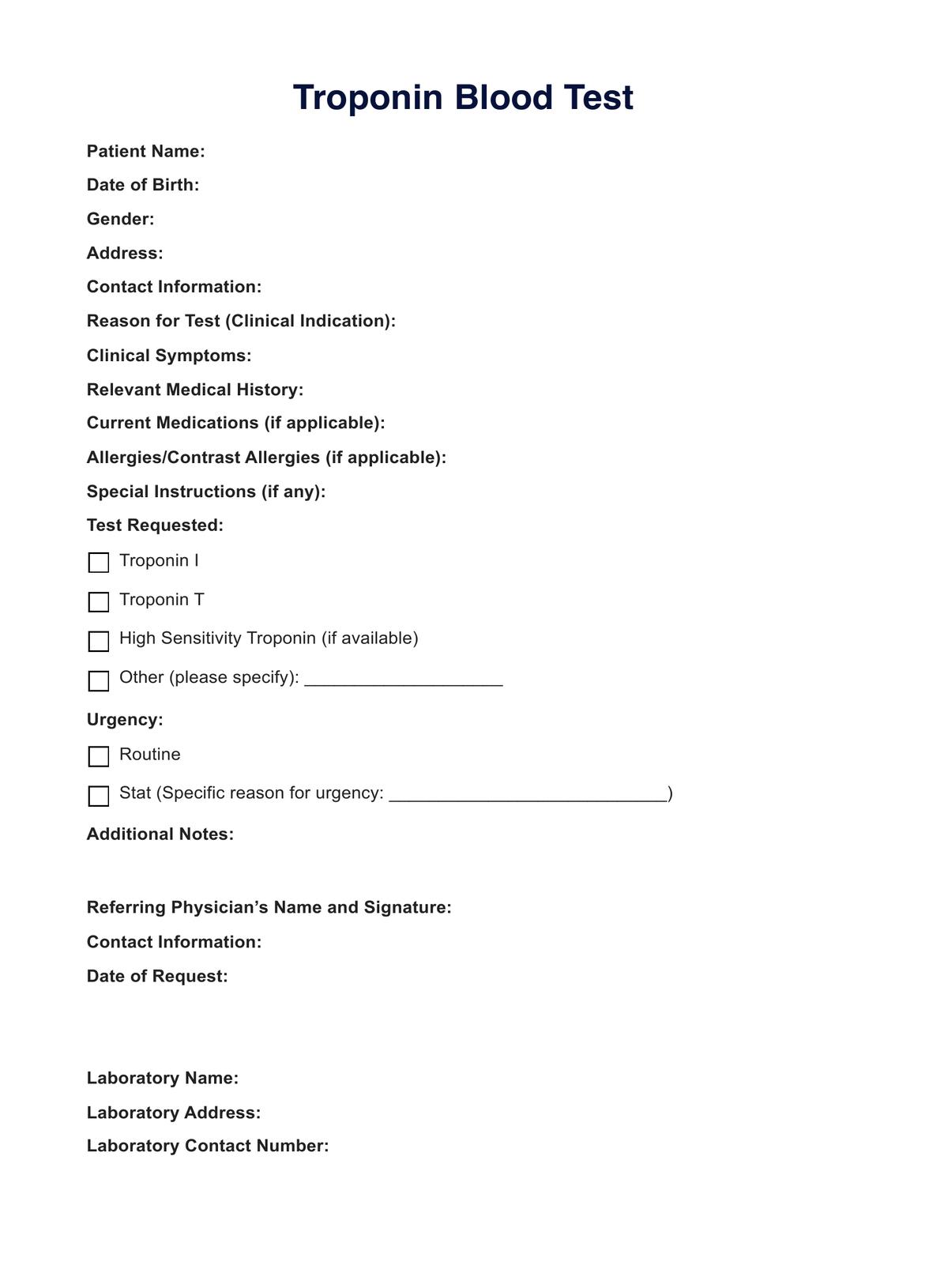General physicians, their assistants, nurses, and specialists like cardiologists are the ones who typically request a troponin blood test.

Understand the uses, result interpretations, etc., of the troponin blood test with our guide. Click here for more information and a free template
General physicians, their assistants, nurses, and specialists like cardiologists are the ones who typically request a troponin blood test.
Troponin blood tests are typically used when ruling out/confirming a heart attack, evaluating the damage after one, and monitoring/identifying/confirming heart-related conditions.
It only takes a few minutes to collect the sample for a troponin blood test, and results usually come back within 1-2 hours but that may vary depending on the laboratory and the situation’s urgency.
EHR and practice management software
*No credit card required
Free
$0/usd
Unlimited clients
Telehealth
1GB of storage
Client portal text
Automated billing and online payments